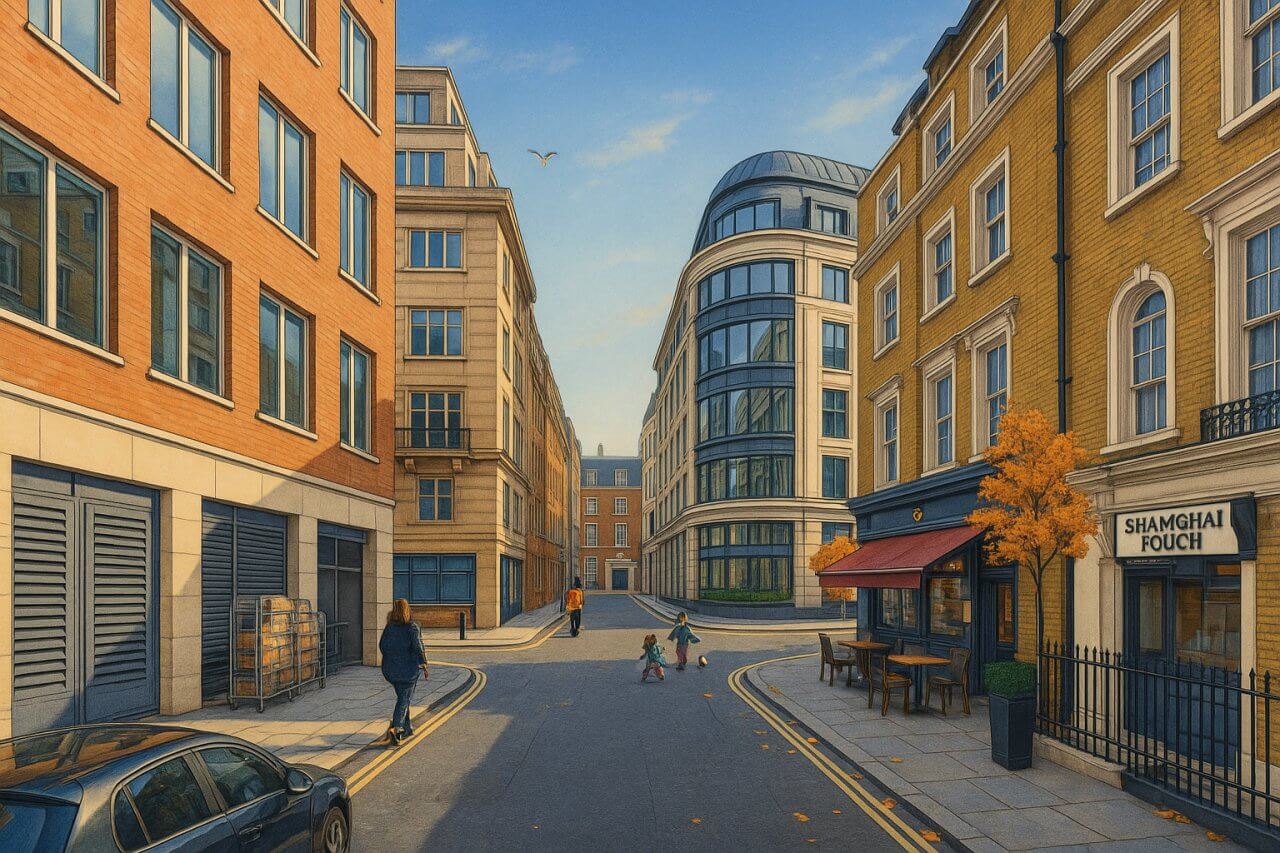
Clarges Street, London
Clarges Street is a distinguished street in the heart of Mayfair, within the City of Westminster, London. Situated in one of the most refined areas of central London, it connects Clarges Mews in the northwest to the bustling thoroughfare of Piccadilly in the southeast.
Overview and Layout
Clarges Street stretches for approximately 300 metres (984 feet), forming a gentle southeast–northwest axis. The stretch from Clarges Mews to Curzon Street has two-way traffic, but from Curzon Street, traffic is one way exiting at Piccadilly. It is intersected mid-way by Curzon Street, while Ashburton Place branches off from the east side of the street in a T-junction arrangement. The street lies entirely within the historic and prestigious neighbourhood of Mayfair, known for its elegance, exclusivity, and high real estate value.
Name and Pronunciation
Clarges Street takes its name from the Clarges family, notable landowners in the 17th and 18th centuries. Sir Thomas Clarges (1618–1695), a prominent politician and property developer, was closely associated with this part of London. The street was laid out in the early 18th century as part of the urban expansion of Mayfair.
Clarges is pronounced CLAR-jiz, with the stress on the first syllable. IPA: /ˈklɑː.dʒɪz/ 
Character and Atmosphere
Clarges Street maintains a quiet, refined character, distinguished by a mix of Georgian and early 20th-century architecture. Buildings along the street are typically mid-rise, with a blend of historic façades and newer luxury developments. The ambience is discreet yet opulent, in keeping with Mayfair’s reputation as a hub of diplomacy, wealth, and cultural sophistication.
The street is lined with private residences, embassies, and members’ clubs, interspersed with select commercial premises. A growing number of luxury flats have been developed in recent years, adding to its cachet.
Nearby Roads and Connectivity
From its junction with Piccadilly, Clarges Street is within easy walking distance of Green Park and its adjoining tube station. At its midpoint, the intersection with Curzon Street provides access to notable establishments such as the Curzon Mayfair Cinema and a number of embassies. Ashburton Place links Clarges Street with Berkeley Street and Stratton Street further east.
Local Attractions and Sights
While Clarges Street itself is relatively quiet, it benefits greatly from its immediate proximity to major London sights:
- Green Park – Just steps from the Piccadilly end, one of the Royal Parks of London.
- Royal Academy of Arts – A short walk east along Piccadilly.
- Shepherd Market – A hidden gem of old-world charm tucked between Curzon Street and Piccadilly.
- Ritz London – Iconic hotel just around the corner on Piccadilly.
Real Estate and Property Values
Clarges Street is among the most expensive residential locations in Westminster. As of early 2025, luxury apartments on the street are listed for between £3,000 and £5,000 per square foot. A two-bedroom flat of around 1,200 sq ft (approx. 111 sq m) may command upwards of £4.5 million, depending on the building and amenities.
Clarges Mayfair, a prestigious residential development completed in recent years near the Piccadilly end of the street, features ultra-high-end flats and penthouses, offering views over Green Park and concierge services. This development has further cemented the street’s appeal to international buyers.
Transport and Accessibility
The closest London Underground station is Green Park Station, served by the Jubilee Line, Piccadilly Line, and Victoria Line. It is located less than five minutes' walk from the southeastern end of Clarges Street.
Other nearby stations include Bond Street Station to the north, and Piccadilly Circus Station to the east. Numerous London Underground stations lie within easy reach, enhancing connectivity to all parts of the City, West End, and beyond.
Bus stops are located along Piccadilly, just at the foot of Clarges Street. Routes such as the 9, 14, and 38 provide frequent service across central London.
History and Development
Clarges Street was laid out in the early 18th century as part of the grand plan for developing the Mayfair estate. Initially residential, it has retained much of its historic function even as buildings have been rebuilt or modernised. The street has always maintained an air of understated affluence, sheltering influential individuals and private institutions behind its brick and stone façades.
Over the centuries, various embassies, clubs, and dignitaries have been associated with Clarges Street. Its discreet nature made it ideal for diplomatic residences and private clubs, and even today, many buildings are not outwardly signed, offering exclusivity and privacy to residents and tenants.
Fun Fact
In the 19th century, Clarges Street was home to novelist William Makepeace Thackeray for a short time. Known for his satirical novel "Vanity Fair," Thackeray’s residence on the street reflects its appeal to London's literary and upper classes of the time.
Quick Facts
- Location: Mayfair, City of Westminster, London
- Length: Approximately 300 metres (984 feet)
- Traffic Direction: One-way, from Piccadilly to Clarges Mews
- Pronunciation: CLAR-jiz /ˈklɑː.dʒɪz/
- Nearest Tube Station: Green Park Station (Jubilee, Piccadilly, Victoria lines)
- Nearby Bus Routes: 9, 14, 38 from Piccadilly
- Historic Significance: Named after Sir Thomas Clarges; developed in the 18th century
- Real Estate: £3,000–£5,000 per sq ft as of 2025; luxury flats dominate
- Nearby Sights: Green Park, Royal Academy, Shepherd Market
Map of Clarges Street, London

Painting of Clarges Street, London (View image in full size)